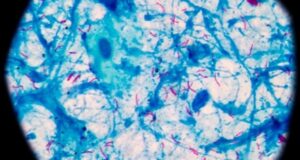Study reveals PM2.5 exposure significantly raises head and neck cancer risk, with marginalized communities most affected, highlighting the need for targeted public health measuures.
 Study: Air pollution exposure and head and neck cancer incidence. Image Credit: khunkornStudio/Shutterstock.com
Study: Air pollution exposure and head and neck cancer incidence. Image Credit: khunkornStudio/Shutterstock.com
The harmful effects of air pollution on health, including an increased risk of cancer, have been well-documented. A new study in Scientific Reports highlights a specific link between PM2.5 air pollution (particulate matter smaller than 2.5 microns) and a heightened risk of head and neck cancer (HNC).
Air pollution and health risks
Air pollution, defined as the contamination of indoor and outdoor environments by gases, ozone, and particulate matter (PM), is a known risk factor for various diseases, including lung, liver, and cardiovascular diseases.
The International Agency for Research on Cancer (IARC) classifies air pollution, particularly PM2.5 (particulate matter smaller than 2.5 microns), as a Group 1 carcinogen that causes lung cancer.
Cells in the head and neck are especially vulnerable to air pollution, including tobacco smoke, which contains numerous carcinogens. This exposure increases the risk of malignancies like squamous cell carcinoma.
Additionally, biological agents contribute to head and neck cancer (HNC) incidence, such as oropharyngeal squamous cell carcinoma (OPSCC) linked to human papillomavirus (HPV) and nasopharyngeal carcinoma associated with Epstein-Barr virus (EBV).
Study overview
A recent study investigated the link between air pollution and rising HNC rates, using lag models over periods of 0 to 20 years to account for the time lapse between exposure and disease onset.
Data came from the Surveillance, Epidemiology, and End Results (SEER) database (2002–2012) and county-level PM2.5 exposure data (1981–2016). Researchers adjusted for demographic and lifestyle factors like smoking and alcohol consumption to isolate the impact of PM2.5.
Key findings
Increased HNC Risk: Higher PM2.5 levels were consistently associated with an increased risk of HNC across all lag periods. The strongest link was found at a 5-year lag, with a 24% higher risk. Zero and 20-year lag periods showed 16% and 15% higher risks, respectively.
Cancer Subsite Associations: Increased PM2.5 exposure was significantly linked to oral and throat cancers but not to sinonasal hypopharyngeal, nasopharyngeal, or oropharyngeal cancers.
Vulnerable Communities: Marginalized communities, particularly poor and racially diverse groups, are disproportionately exposed to polluted air. These populations are more likely to present with advanced HNC, suggesting a role for air pollution in disease progression.
Significance
The study emphasizes the importance of selecting appropriate lag models to predict HNC incidence accurately, especially given improvements in air quality in the U.S. over recent decades.
However, even small increases in air pollution concentrations below the EPA’s National Ambient Air Quality Standards (NAAQS) can harm human health and shorten lifespans.
Conclusion
This research highlights air pollution as a modifiable risk factor for HNC and underscores the urgent need to improve air quality, especially in high-risk communities.
Targeted interventions could reduce cancer incidence and support public health initiatives to protect vulnerable populations.




